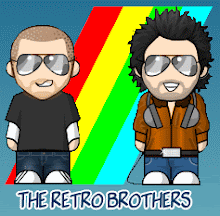 ZX Spectrum 128
ZX Spectrum 128Now we got more memory and decent sound. Bring on the arcade games!
The ZX Spectrum 128 was an 8-Bit personal home computer released by Sinclair Research Ltd in 1986 (in conjunction with their Spanish distributor Investrónica). It had been referred to during development as the 'Derby' before it was finally given the 'ZX Spectrum 128' moniker. Apt I suppose since it had a (then) massive 128KB of RAM installed.
Modelled on the ZX Spectrum + , it was a similar machine with a few important enhancements. The keyboard was slightly better, having a crisper touch and a higher level of responsiveness. It had more RAM - now sporting a large 128KB compared to it's 48KB younger brother.
But perhaps most importantly - the machine had been blessed with a decent sound chip - the AY-3-8912 (which was also present in Amstrad CPC machines). At last, programmers had something decent to work with on the sound front - and those all important arcade games could be blessed with true three channel music and sound effects!
Spectrums were already extremely popular, and this machine was cleverly designed to take full advantage of the Spectrums existing software (which already had 1000's of arcade games, platform games and text adventures) and hardware base. (Are you listening Commodore Plus 4 designers?)
Anyway, when the machine was switched on it would greet the user with a menu.
- "Greetings Professor Falken"
- "Tape Loader" - in case you can't guess this was to run programs from tape
- "Calculator" - to enter numerical operations without having to type PRINT. This was a very handy feature
- "Tape Tester" - to test the input level of the tape recorder. Another handy feature
- "BASIC 48" and "BASIC 128" - this allowed you to run it in '48 mode' for ZX Spectrum 48 compatiblity, or to use the new features of '128 mode'.
It also had new keywords to use the extended memory as a RAM disk (unless bank-switching routines were utilized), and to handle the new sound chip and the MIDI out socket. This was an exciting change when coming from classic Speccy programming.
It managed to be popular due to being competitively priced, retailling at £179.95 on release. This was good value for a machine with 128KB and full MIDI capability - not to mention an already large library of classic games, utilities and hardware.
Many existing games were re-released as a '128' version, usually featuring new menu music and better sound effects. The main advantage was being able to load larger computer games (such as Combat School) into memory in one go - no need for loading each portion of the game in section by section. This was a real boon.
Sinclair had also managed to increase the CPU speed slightly, with the Zilog Z80 A running at 3.54690 MHz, but the speed difference was only marginal.
The machine did have the same graphical 'limitations' as the 48K version (the famous attribute clash), and was technically identical in this respect.
Still a cool looking piece of kit, the new design was as nice to look at as the previous models. Sinclair machines always did look good.
Still, it was a good 8-Bit machine, and was the last of the real 'Sinclair' Spectrums. Sigh.
Kneel before it and acknowledge your thanks to the last of the 'Sir Clive' machines. A fine retro computer.
To see further information about games, developers and software houses for this machine, go to ZX Spectrum Games
For more general Speccy info and vids go to Sinclair ZX Spectrum
We recommend trying to pick up one of these machines.
Look at computers for sale online or even locally.
If you don't want to get hold of the real hardware then try and download an emulator and download those classic games. Alternatively you could try and play them online.
COMPUTER NAME: ZX Spectrum 128
MANUFACTURER: Sinclair
MACHINE TYPE: Home Computer (classic games machine)
COUNTRY OF ORIGIN: United Kingdom
RELEASE YEAR: January 1986
END OF PRODUCTION: December 1986
BUILT IN LANGUAGE(S): Sinclair Basic
KEYBOARD: QWERTY keyboard
CPU: Zilog Z80 A
SPEED: Slightly quicker than the 48KB model running at 3.54690 MHz
RAM: 128KB
ROM: 32KB (16k 48k Basic + 16k 128k Basic)
TEXT MODES: 32 x 24
GRAPHIC MODES: 256 x 192
COLORS: 8 with 2 tones each (normal and bright except for Black which only had one tone)
SOUND: 3 channels over 7 octaves provided by Yamaha AY-3-8912 chip
SIZE / WEIGHT: 320 x 150 x 45 mm
I/O PORTS: Expansion bus, Numeric Keypad, RS232 / Midi Out, Video RGB, Tape (1200 baud)
POWER SUPPLY: External PSU 9v DC, 1.85A
PERIPHERALS: ZX printer, ZX microdrives, Joystick Interfaces
PRICE: £179.95 (UK 1986)
Retro Computers and classic games




0 comments:
Post a Comment